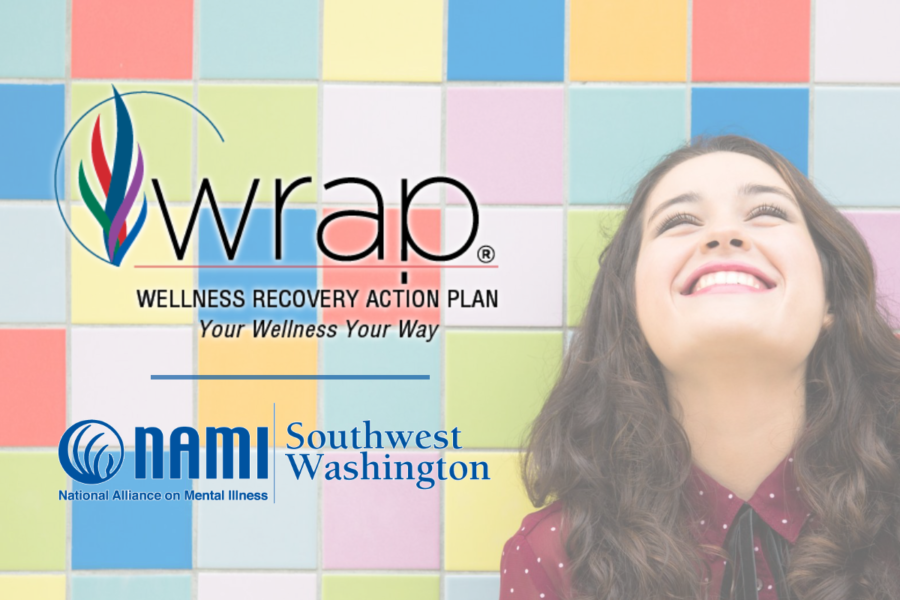By NAMI Southwest Washington
Crisis. A place where no one ever wishes to find themselves, and once in the throes, is a complex place to navigate. When it comes to mental health, preparing for a crisis is not as simple as buying batteries for a flashlight in case the power goes out, but there are ways to plan that make it easier for families to reach the other side of what can feel like an impasse. Deciding who will feed the dog in case of hospitalization and who will communicate with the medical team may not seem like pressing issues on a good day, but having decisions made ahead of a bad day can save an individual and their family a lot of stress and heartache. I recently took part in a training course, WRAP, that not only teaches people how to prepare for crises but also helps with what can be unexpected post-crisis.
The Wellness Recovery Action Plan (WRAP) was developed in 1989 as a person-centered approach to help identify what makes you well and then to utilize wellness tools to maintain wellness and relieve difficult feelings. Sounds simple, and it is! But WRAP is more than just jotting down ideas. WRAP is a powerful process intended to create the life you want, which can require deep thought and careful consideration. Throughout my training, for example, participants were encouraged to explore who we might find helpful in our lives and who might be hurtful. And the options might not be obvious as many variables are at play. A sibling may seem like a perfect choice for hospital visits, but it would be a harmful choice for both parties if hospitals are stressors to them. In that scenario, perhaps a better job may be to take care of pets. Details such as this make up just one part of what can be learned in WRAP training.
Wellness is defined differently for everyone. What works for one person may seem like a terrible idea for another! Thankfully, WRAP is designed so that each person can make a plan that is unique to their own wellness journey. Hope, personal responsibility, self-advocacy, support, and education are the five key concepts individually explored during training and are essential to creating a plan that really works. In addition to the values and ethics, WRAP teaches individuals how to build and regularly access a wellness toolbox to recover and maintain wellness. The toolbox consists of a daily plan for putting wellness into daily action, listing stressors that may lead to uncomfortable feelings, identifying early warning signs that indicate action is needed to restore wellness, creating a crisis plan for ourselves and loved ones, and creating a post-crisis plan for evaluating our WRAP and re-adjusting the wellness toolbox to identify what worked and what did not.
It is no one’s fault when a crisis happens, and the results can be downright devastating. But with a plan like WRAP, stressors can be alleviated, and everyone is given the opportunity to learn a great deal about themselves, their loved ones, and numerous ways to support others. One of my favorite activities from my training was learning how to listen, to listen actively without responding, interrupting, or reacting, and then reflecting on what we learned about our partner. The invaluable lesson I learned was that I need to pay greater attention and really listen to what people in my life need when they come to me for support. And when I am listening, I allow my loved ones to access and maintain their wellness.
A crisis does not ask permission to show up and turn life upside-down. And oftentimes, when people reach out for help, the crisis is already knocking at the door. Having a WRAP plan can help determine the trajectory and fallout of what can feel like an impossible situation and provide a bit of light to those who feel lost in a bit of darkness. Perhaps it is a bit like a battery for a flashlight.




